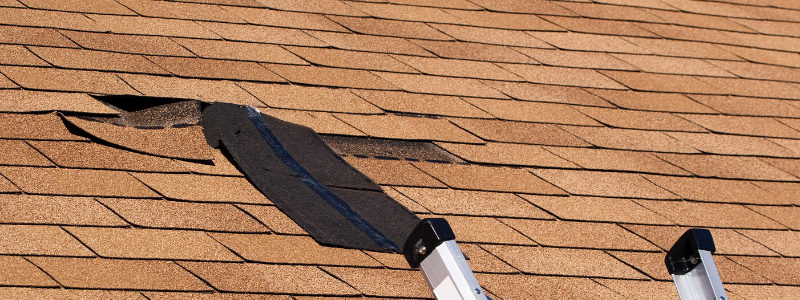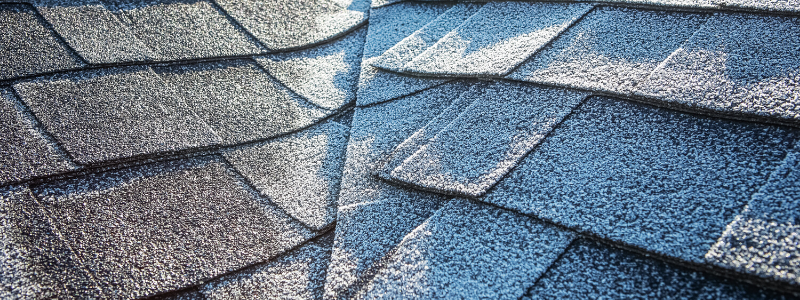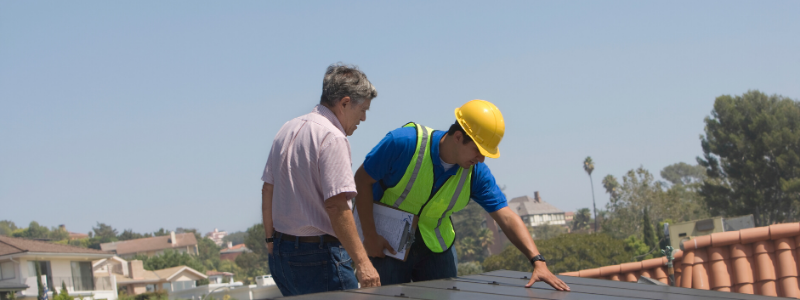
How Often Should I Have My Roof Inspected
Every roof is a little bit different. Because of that, it isn’t always easy to say when, exactly, a specific roof should be expected. That’s why there are specific guidelines and recommendations that have been developed, over the years, regarding how often your roof should be inspected and the kinds of factors that will greatly affect your roof. Being aware of these guidelines and factors will make it easier for you to maintain the quality of your roof, while also knowing when its time for your roof to have a professional inspection. Find out below: how often should I have my roof inspected?

What Affects Your Roof?
The quality and stability of your roof are affected by a wide variety of different factors. The most important factors, though, are the ones that relate to the weather. Factors such as rain, hail, snow, and the sun. Each one of these different factors will affect the quality and stability of your roof in various ways.
Every year, Colorado experiences a fair amount of rain, a decent amount of hail, a lot of snow, and plenty of sun. Because of that, most residential and commercial roofs are capable of handling those elements. But, this certainly doesn’t negate the fact that those elements can have a significant impact on the quality and stability of your roof.
If there’s a significant amount of rain, it isn’t uncommon for the shingles on that roof to absorb the moisture. When this happens, it’s inevitable that the shingles will weaken, which leads to those shingles falling off. If that doesn’t happen, though, too much rain can also lead to the shingles rotting, which means they take longer to fall or create mold. Mold is especially bad as it can degrade not just that shingle, but the entirety of your roof.
More often than not, heavy rain isn’t a significant issue. But, hail can lead to very big problems that affect your roof in a variety of less-than-pleasant ways. In fact, Colorado usually experiences three-to-four catastrophic hail storms every year, and each one of these hail storms often leads to over $25 million dollars in insured damage. The reason for this is that hail is quite strong, and it comes down at a quick pace. This can lead to gutters being dented and cracked open. But, it can also lead to entire shingles breaking down, or the granules that comprise the shingle falling off. If any of those things take place, it isn’t unlikely that the entire roof would begin to fall apart.

Since Colorado experiences so much snow, snow-related roof damage is incredibly common. Usually, snow-related roof damage occurs due to one of three things. If there is too much snow on a roof, it can lead to that roof collapsing. If there is a lot of snow on a roof, when that snow melts and then freezes again, it will expand and damage the foundation of the roof along with a large portion of the roof. If the roof isn’t particularly stable or dense, then all of that melted snow can flow through the ceiling and into your home, leading to cracks in your roof, damaged walls, and other issues.
The sun has a significant effect on your roof, but this effect often takes place over time. As the sun’s rays shine down on a roof, the roofing material expands, and then it contracts as the sunsets. This can lead to the roof becoming less and less stable, leading to leaks, cracks, and other problems.
How Can You Inspect Your Roof On Your Own?
A professional inspection will always be preferable to that of a do-it-yourself inspection. The reason for this is that a professional inspection is far more thorough and elaborate, ensuring that every facet of the roof is inspected and that any problems are noted. But, for the times when a professional inspection simply isn’t an option, a do-it-yourself inspection can be very useful.
To inspect your roof on your own, there are a series of different things that you must pay attention to. By paying attention to these things, you will be able to determine the current quality and stability of your roof. But, it’s important to remember that this inspection is no replacement for a professional inspection. So, if you suspect there’s something wrong with your roof, it’s best to just hire a professional.
Take a look at the material that comprises most of your roof. For many people, these will be the shingles. Make sure to look for any shingles that are either broken or completely missing. If any of those shingles has been dented or cracked, take note of that. The same applies to any other material that your roof is composed of, make sure it’s all there and that it isn’t damaged.
Right after taking a look at the surface of your roof, you need to inspect the gutters. Make sure that your gutters are sturdy, check to see if they’re loose or rusty. Check what’s in the gutters too, if you can. If there are granules from your roof’s shingles, then that means the shingles are breaking down.
To end the process, it’s important to make sure that there isn’t any debris – even just moss, for example – on your roof or in your gutter. If there is – or, even if your gutters have gunk in them – make sure to remove it and to see if it has lead to any damage.
From that, you will have performed a very basic do-it-yourself inspection. If, during the inspection, there are specific areas that you want to inspect, then inspect them. Just remember, though, that this is a very simple inspection and it isn’t a replacement for a professional inspection.
- Performing a do-it-yourself inspection is quite easy, but by no means, replaces a professional inspection
- To perform a do-it-yourself inspection, you need to inspect the surface of your roof to make sure that the material is still present and not damaged in any way
- Right after that, make sure to look at the gutters to see if they are cracked, rusty, or loose
- To end the process, make sure there isn’t any debris on the roof or in the gutters, and if so – even if it’s just moss – remove it and see if any damage has occurred

How Often Should I Have My Roof Inspected?
The National Roofing Contractors Association recommends that you have your roof inspected twice-per-year. By having your roof inspected twice-per-year, you can catch and prevent any significant problems before their true effects become apparent. But, if you have dealt with a significant weather event – such as a snowstorm – then it’s best to have your roof inspected sooner rather than later.
As a general rule, having your roof inspected twice-per-year is ideal. That way, you can catch, and prevent, any significant problems before they arise. But, if you experience a significant weather event or some very recognizable damage, then it’s important to have your roof inspected as soon as possible.
Right after roof damage is recognized, or a significant weather event takes place, a contractor can come out and inspect your roof. By doing this, you will learn all about the current state of the roof, the damage that took place, and what can be done to fix it. But, if you wait to do this, the damage may become worse, leading to bigger problems down the road.
At B&M Roofing, we offer a free estimate. By having us come over, you will be able to learn all about the current state of your roof, what kinds of repairs are needed, and how much all of that will cost.




































